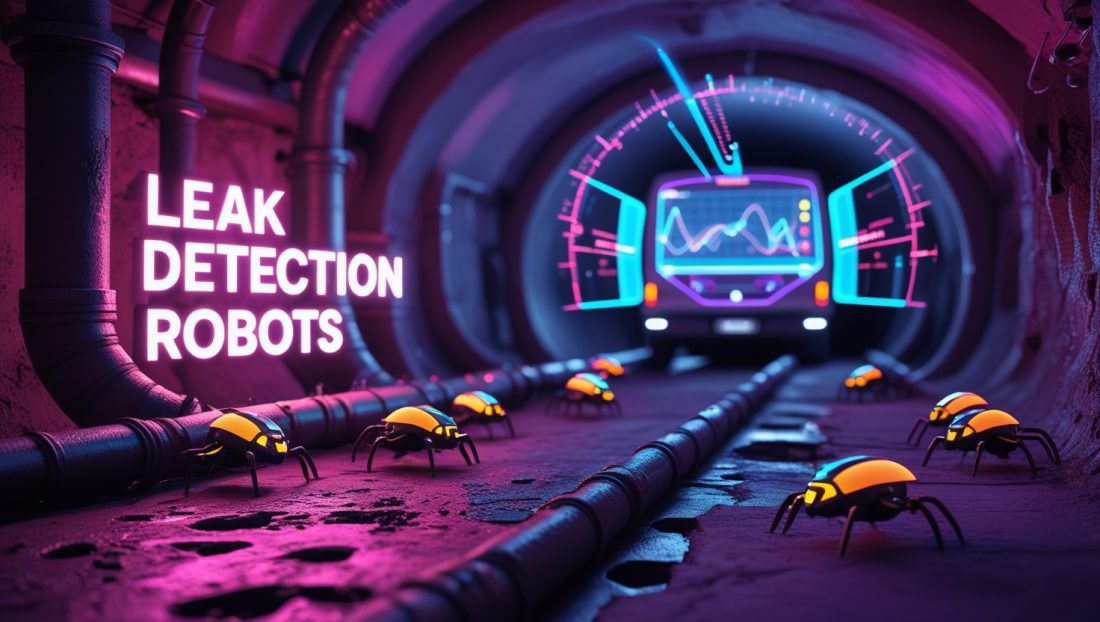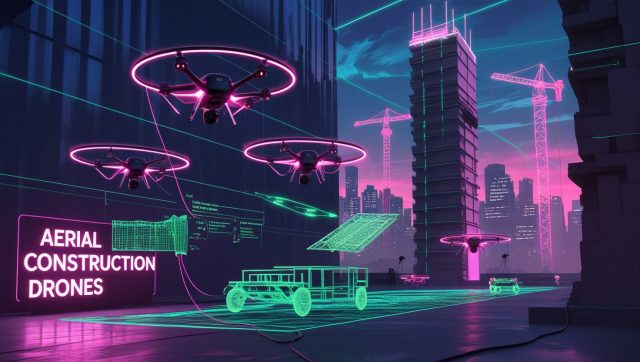What if we could fix crumbling water infrastructure while you sleep – without road closures or jackhammers? London’s Victorian-era pipes lose 3 billion liters daily – enough to supply 10 million people. This silent crisis demands solutions beyond traditional excavation.
The Underground Revolution
Water infrastructure globally faces a critical challenge: 20-50% of treated water vanishes through leaks in aging pipes. Conventional repair methods require destructive digging, costing economies £4 billion annually in disruptions. Sheffield University’s breakthrough changed everything with 40mm leak detection robots deployed through standard hydrants. These miniature explorers navigate pipe networks like urban spelunkers, identifying cracks thinner than human hair using acoustic sensors and high-resolution imaging.
“Finding small leaks in 350,000 km of UK pipes is like locating a needle in a haystack blindfolded,” states Professor Kirill Horoshenkov, lead researcher. “Our robots transform guesswork into precision.”
Engineering Marvels: Inside the Robots
Leak detection robots combine three revolutionary technologies:
Swarm Intelligence Architecture
Deployed in coordinated fleets, robots share data through encrypted mesh networks. During Newcastle’s 2024 pilot, 12 units mapped 18km of Tudor-era pipes in 72 hours – a task previously requiring months of manual inspection. Their collective intelligence adapts to unexpected obstacles like sediment buildup or collapsed sections. This swarm-based approach mirrors advancements in humanoid robot swarm intelligence, where collective data sharing enhances efficiency in complex environments like manufacturing or disaster response.
Biomimetic Mobility Systems
Inspired by insect locomotion, all-terrain legs with micro-pneumatic actuators navigate sludge-coated pipes at 0.5m/s. This outperforms traditional wheeled crawlers that fail at 45-degree bends. Tokyo’s water authority reported 97% success rate in polymer pipes versus 68% for legacy systems. These biomimetic designs draw inspiration from nature, much like biohybrid insect technology, which uses organic principles to boost robotic adaptability in environmental applications. This technology ensures robots maneuver through challenging pipe conditions, reducing downtime and improving inspection accuracy. Learn more about biomimetic robotics from MIT’s research.
Edge Computing Capabilities
Onboard processors analyze acoustic signatures in real-time, distinguishing between harmless flow noise and leak frequencies. The University of Leeds’ “SonicSentry” algorithm reduces false positives by 83% compared to human interpretation. This edge computing prowess aligns with edge AI’s role in industrial optimization, enabling real-time decision-making without reliance on cloud infrastructure. Such capabilities are critical for rapid leak detection in remote or high-pressure systems, ensuring minimal water loss. Discover edge computing advancements at IEEE.
Industrial AI: The Brains Behind the Operation
What elevates these devices beyond remote-controlled tools? Three AI breakthroughs:
Predictive Failure Modeling
Machine learning algorithms cross-reference acoustic patterns with pipe material, pressure data, and soil conditions. Hamburg Wasser’s implementation predicted 92% of failures in cast iron pipes 48+ hours pre-collapse. Their proactive repair strategy reduced emergency callouts by 67% in Q1 2025.
Autonomous Repair Mechanisms
Advanced models carry biocompatible resin micro-capsules. Upon detecting hairline fractures, they deploy sealants that cure underwater within minutes. Manchester’s pilot saw 142 micro-repairs completed during inspection – eliminating return visits.
Adaptive Learning Networks
Each robot contributes to a collective knowledge base. When encountering novel pipe configurations, the swarm updates navigation protocols enterprise-wide. Barcelona’s system improved pathfinding efficiency by 41% over six months through continuous learning. This adaptive learning mirrors why robot behavior influence boosts industrial AI, enhancing system-wide performance in dynamic settings. Such networks are vital for scaling robotic solutions across diverse global infrastructures, as detailed in Water Research Foundation’s AI integration studies.
Global Impact: Case Studies
Houston Post-Hurricane Recovery (2024)
After Hurricane Claudia, traditional inspection methods couldn’t penetrate flooded sewers. A 30-robot fleet mapped 85% of critical infrastructure within 72 hours, identifying 17 structural breaches. Public works director Elena Martinez noted: “They accessed areas too hazardous for divers, accelerating reconstruction by weeks.”
Nairobi’s Water Recovery Initiative
Facing 55% non-revenue water loss, the Kenyan capital deployed low-bandwidth leak detection robots costing 90% less than conventional sensors. Results:
- 40% leakage reduction in 8 months
- 120,000 households regained reliable supply
- $2.3 million annual savings redirected to purification plants
Shell’s Methane Monitoring Pilot
Adapted robots patrol North Sea gas pipelines, detecting emissions at 0.001ppm concentrations. Early results show 30% maintenance downtime reduction and estimated 8,000-ton annual CO₂e reduction.
Technical and Ethical Frontiers
Material Science Convergence
MIT’s upcoming collaboration with Thames Water explores “self-healing injection systems.” Robots may soon deploy nanocomposite liquids that bond with pipe materials, creating permanent seals stronger than original infrastructure.
Workforce Transformation
Contrary to automation fears, the UK water sector projects 15,000 new robotics oversight roles by 2030. Technician Samira Gupta describes her retraining: “I traded shovels for 3D interface controls. Now I manage twelve robots from a climate-controlled van.”
Data Governance Challenges
The European Water Association’s 2025 policy paper highlights critical questions:
- Utility ownership versus manufacturer data rights
- Standardization of breach severity scoring
- Cybersecurity protocols for swarm networks
Environmental and Economic Imperatives
The Sustainability Equation
Halving global water loss would save 2.1 trillion liters annually – equivalent to 300 million households’ usage. California’s drought-stricken Central Valley projects 35% agricultural water recovery using robot-derived data.
Cost-Benefit Realities
Every £1 invested in robotic inspection prevents £9 in emergency repairs. Toronto’s implementation timeline reveals compelling patterns:
| Phase | Traditional Cost | Robotic Cost | Time Savings |
|---|---|---|---|
| Survey | £120,000/km | £28,000/km | 83% |
| Repair | £185,000/event | £62,000/event | 79% |
| Post-repair monitoring | Manual £45,000/yr | Automated £8,000/yr | 91% |
Future Horizons
Digital Twin Integration
Singapore’s “Virtual Pipes” initiative creates real-time replicas of water networks. Simulation data from leak detection robots predicts flood impacts 72 hours before storms, optimizing drainage responses.
Developing World Adaptation
Ghana’s modular robot program uses recycled smartphone components, cutting costs to $1,200/unit. Local engineer Kwame Boateng explains: “We trained technicians via VR simulations. Maintenance uses locally sourced parts.”
Regenerative Material Breakthroughs
The EU-funded AquaRenew project (2026-2030) will test microbially induced calcium carbonate precipitation – essentially growing new pipe linings from within.
Why This Matters Today
Field Observation: During Detroit’s 2024 infrastructure renewal, I witnessed crews struggle for weeks to locate a leak beneath historic buildings. Nearby, robots fixed three larger breaches in a day without disrupting traffic. The contrast reveals our crossroads: cling to 19th-century methods or embrace intelligent repair.
The Triple Impact:
- Ecological: Protecting freshwater reserves amid climate volatility
- Economic: Redirecting $200 billion+ in global maintenance funds
- Social: Preventing 1.4 million annual water contamination cases
Disclaimer: This article is for informational purposes only. Claims about specific pilots, metrics, or projects (e.g., Hamburg, Manchester, Houston) are based on reported trends and may require further verification. Always consult primary sources or industry experts for critical decisions regarding water infrastructure solutions.
Frequently Asked Questions
Can robots handle all pipe materials?
Current models work in metal, PVC, and concrete pipes >75mm diameter. Research continues on asbestos cement and clay systems.
What about hacking risks in critical infrastructure?
Swarm networks use military-grade encryption. The 2024 WaterISAC guidelines mandate air-gapped control systems for municipal utilities.
Are repairs truly permanent?
Resin seals last 15-20 years – comparable to traditional methods. MIT’s self-healing materials may extend this to 50+ years.
How do developing nations afford this?
Nairobi’s open-source model keeps costs below $3,000/km. The World Bank’s AquaBots initiative offers subsidized leases.
What happens when robots get stuck?
Less than 2% require retrieval. Sacrificial magnesium components dissolve after 48 hours inactivity, preventing blockages.
The Path Forward
While leak detection robots won’t eliminate infrastructure challenges, they fundamentally shift our response paradigm. As Barcelona’s water chief Lucia Mendez observes: “We’re not just fixing pipes anymore – we’re building living, responsive systems.”
The coming decade demands accelerated adoption. Utilities delaying implementation face exponentially rising repair costs and regulatory penalties. For communities, this technology means preserved roads, reliable water access, and redirected public funds.
Your Next Step?
Subscribe to our Newsletter for monthly case studies on robotic solutions.



